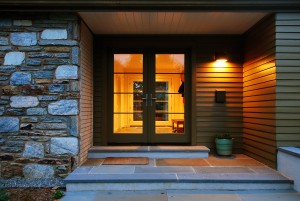In the News Part III
Everything You Wanted to Know About Windows The third installment in a 5-part Examiner.com series featuring Myers Constructs. Read the story here.
Part I In a Series: When Vintage Decor Meets Modern Renovation – and a Giveaway!
If you follow our blog regularly, you may already know that we’re doing a long-awaited renovation of the master bedroom suite at our 1950s Sputnik-era split-level rancher in Flourtown. Happily,[...]
Q and A: Checking in With Myers Constructs
As the busy fall home-renovation season kicks off, Myers Constructs co-owner Diane Menke sits down for a chat about breaking traditional design build paradigms, finding paths for growth in a[...]
Passive Protection
Here are a few snaps of the small house we stayed in on our recent Florida trip to Amelia Island. You can see these are very efficient, small[...]
It’s Spring … Time to Check Your Seams
The layers of snow have melted, and the ground is beginning to thaw. The seemingly endless winter has finally loosened its grip -- but not before doing some[...]
Home Maintenance Tip: Air Leaks
This is the best time of year to locate air leaks in your older home. You will know you have them if you can feel drafts, or if[...]
Have you signed up for our e-newsletter yet?
You don't want to miss another issue! Each bi-weekly delivery focuses on important information, tips and trends for homeowners, as well as updates and photos of our latest and greatest[...]
Oh Baby, It’s Cold Outside
With temps hovering in the 30s all week -- and it's not even officially winter yet! -- you may be noticing drafty windows and inefficiencies in your heating system. If[...]
Older Homes – More Energy Efficient Than You Think
Older homes tend to get a bad rap for being energy inefficient. The truth is, many older homes have built-in energy-efficient systems that a homeowner should learn to[...]
Special Reasons to Think Windows and Doors!
Winter is right around the corner ... now is the time to think windows! In addition to energy tax credits that are currently in place, you can save up to[...]









